Participation of Reformed Churches and Clergy in Demonstrations in Ferguson
This essay is an excerpt from Elizabeth Hinson-Hasty’s contribution to Calvinism on the Peripheries: Religion and Civil Society in Europe, ed. by Ábrahám KOVÁCS, co-edited by Béla BARÁTH (Budapest: L’Harmattan, 2009), 295 pp.

The events that have unfolded in Ferguson, Missouri, since 2014 and the churches’ response to them offer a noteworthy example of churches practicing creative resistance. Intertwined and complex dynamics of racism, inequalities in wealth, the chronic instability created by the perpetual impoverishment of individuals and communities, the injustice of the criminal justice system, and creative collaborative resistance are illumined by this case.
You have undoubtedly read or seen news regarding the shooting and killing on August 9, 2014, of Michael Brown, an 18-year-old African American young man. Brown was staying with his grandmother during the summer and on that day in August walked to a neighborhood convenience mart with a friend. He was reported by the clerk to have stolen a pack of Swisher Sweet cigarillos and then when he left the store pushed the clerk aside so that he could get out the door. Brown and his friend, Dorian Johnson, began walking home in the street. Soon after, a police car drove up alongside Michael and Dorian and told them to get onto the sidewalk. Johnson said that they told Darren Wilson, the police officer, “that they were ‘not but a minute away from our destination, and we would shortly be out of the street’.” Officer Wilson pulled forward and then backed up his car, almost hitting Michael and Dorian. Still in his car, the officer then grabbed Brown by his neck. Brown tried to pull away, but the officer kept pulling Brown toward him. Dorian reported that it was then that Wilson drew his weapon, and “he said, ‘I’ll shoot you’ or ‘I’m going to shoot’.” He fired and hit Brown.
___________________________________________
In the U.S., the length of time Brown’s body was left in the street on display was a grim reminder of our ghastly and horrific history of lynching, where black bodies were left on display and then dismembered, relics sold as souvenirs.
___________________________________________
Two more gruesome details must be given attention. Michael Brown was shot between six and eight times with wounds in his chest and head. [1] His body was left in the street for more than four hours. Remember that it was August. Summer in Missouri is hot. There Brown’s body lay on the scorching pavement, face down with “blood streaming from his head.” His body was covered up with a white sheet after some time, but his feet remained exposed. Much later, the police shielded his body with a low six panel orange partition. Officer Wilson never touched the body after he shot the young man; he never felt to see if his veins were still pulsing with the blood of life. The delay sparked demonstrations all across the nation. People in Ferguson responded mostly by yelling and chanting.
 In the U.S., the length of time his body was left in the street on display was a grim reminder of our ghastly and horrific history of lynching, where black bodies were left on display and then dismembered, relics sold as souvenirs. Theologian James Cone observes in his book The Cross and the Lynching Tree that in its heyday lynching was a “public spectacle.” The lynching of black U.S. Americans was not common until after the end of slavery when black bodies no longer held their value in the white economy. Originally lynching was not directed toward blacks. Cone points out that it likely began in the state of Virginia during the Revolutionary War as people moved west and lived in areas that were out of the reach of the courts. A judge with the last name of Lynch was invoked to punish “rustlers, robbers, wife abusers, and others who committed what a community perceived as outrageous deeds.” [2] Lynching at that time was regarded as necessary evil. The meaning of lynching changed when, after the Civil War, it became charged with a racial component as “the white community’s way of forcibly reminding blacks of their inferiority and powerlessness.” [3]
In the U.S., the length of time his body was left in the street on display was a grim reminder of our ghastly and horrific history of lynching, where black bodies were left on display and then dismembered, relics sold as souvenirs. Theologian James Cone observes in his book The Cross and the Lynching Tree that in its heyday lynching was a “public spectacle.” The lynching of black U.S. Americans was not common until after the end of slavery when black bodies no longer held their value in the white economy. Originally lynching was not directed toward blacks. Cone points out that it likely began in the state of Virginia during the Revolutionary War as people moved west and lived in areas that were out of the reach of the courts. A judge with the last name of Lynch was invoked to punish “rustlers, robbers, wife abusers, and others who committed what a community perceived as outrageous deeds.” [2] Lynching at that time was regarded as necessary evil. The meaning of lynching changed when, after the Civil War, it became charged with a racial component as “the white community’s way of forcibly reminding blacks of their inferiority and powerlessness.” [3]
The situation in Ferguson represents well the intertwined and complex dynamics of hypercapitalism, rugged individualism, poverty, racism, rapidly growing wealth inequalities, and violence that have created deep polarization in the U.S. Originally, the suburbs surrounding St. Louis were created because wealthier people did not want to support the people in poverty living in the city center. New smaller cities were incorporated that surrounded St. Louis’ urban core. While the city has a longer history, Ferguson became a charter city in 1954 that adopted a council-manager form of government. Ferguson is now 67% black and about 29% white in addition to smaller percentages of other racial ethnic groups. The estimated median household income of Ferguson residents is $36,121; about $10,000 less a year than the rest of the state of Missouri. Approximately 25% of the city’s population lives below the federal poverty line. [4] As a point of comparison, in 2013, the national poverty rate was about 14.5%.
___________________________________________
The situation in Ferguson represents well the intertwined and complex dynamics of hypercapitalism, rugged individualism, poverty, racism, rapidly growing wealth inequalities, and violence that have created deep polarization in the U.S.
___________________________________________
Small cities like Ferguson don’t get revenue from St. Louis. One of the ways that Ferguson funds part of its city budget each year is through municipal fines and fees. There are financial incentives for police and court staff to deliver on revenue increases. In other words, the police and court officials are charged to generate revenue with parking tickets, fines, and fees. These policies have a profound impact on the police departments approach to law enforcement. The Department of Justice report concluded that this focus on revenue generation has fundamentally compromised the role of the city court, “the court primarily uses its judicial authority as the means to compel the payment of fines and fees that advance the city’s interest.” [5]
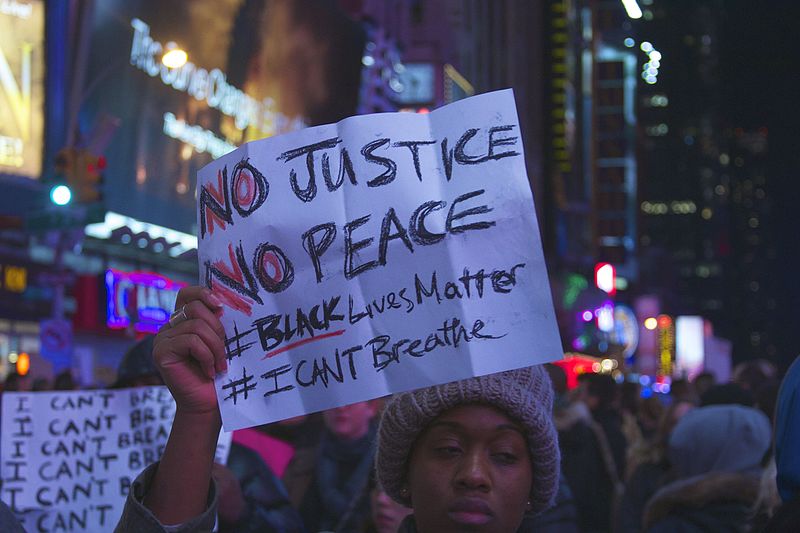
Photo Credit: Paul Silva, CC 2.0 Generic
Combine financial incentives with racial bias and stereotypical assumptions made about people of color as well as a majority white police force in a city that is predominately black, and you have the perfect ingredients to betray communal trust and for explosive violence. The Department of Justice found that 90% of the cases of documented force used by Ferguson Police Department officers was used against African Americans. African Americans accounted for 85% of vehicle stops, 90% of citations, and 93% of arrests made by police officers. [6] Moreover, African Americans are 68% less likely to have their cases dismissed by the courts and 50% more likely to have cases lead to arrests. It is critical to observe that the Department of Justice concluded that these statistics do not reflect the fact that African Americans are more likely to break the law, but rather show evidence of “unlawful bias” and “stereotyping.”
Social critic and novelist James Baldwin once wrote that “people are trapped in history and history is trapped in them.” The glimmer of hope in this bleak scene lies in those who engage in creative resistance and who because of their faith refuse to be trapped in history or to have the story of hypercapitalism, hyperindividualism, and the commodification of all things written upon them.
___________________________________________
One of the ways that Ferguson funds its city budget is through municipal fines and fees. In other words, the police and court officials are charged to generate revenue with parking tickets, fines, and fees.
___________________________________________
A protest movement developed almost immediately after Michael Brown was shot and killed. The young people in Ferguson initiated the movement in response and remain the driving force behind it. Congregations and church leadership soon followed. Mike Trautman, a pastor of the First Presbyterian Church in Ferguson, Missouri, reflected on the feelings of people in his congregation in an interview for The Presbyterian Outlook, [we] are “feeling ‘overwhelmed and tired,’ worn down by a season of unrest that erupted after Darren Wilson a Ferguson police officer, shot an unarmed teenager, Michael Brown, on Aug. 9…They’re tired, but they are also living into the questions that Brown’s death has laid before their community and before the country.” [7] Trautman observed that one of the things not often discussed is that many people stay in Ferguson because they intentionally want to be part of a more diverse community rather than living into the dominant narrative of segregated cities in the U.S.

Churches such as St. John’s United Church of Christ and Greater St. Mark’s Missionary Baptist Church within the city of Ferguson became host churches for the Black Lives Matter Freedom Riders. They began training in non-violent resistance, educating visitors and members of their congregation on the use of force by police and community relations, and identifying and offering programming on the underlying economic and social causes of violence.
Religious leaders across denominations and faith traditions have participated in protests. Some of these demonstrations have utilized an accompaniment model where people of faith and religious leaders go to Ferguson to stand with members of the local community as witnesses to the economic and physical violence of the police. Clergy have come from all over the country to participate in demonstrations. Eden Seminary, a United Church of Christ theological school located in St. Louis, cancelled all classes on campus and held a teach-in in Ferguson at the site of the demonstration.
___________________________________________
Mike Trautman, pastor of the First Presbyterian Church in Ferguson, Missouri, reflected on the feelings of people in his congregation, “They’re tired, but they are also living into the questions that Brown’s death has laid before their community and before the country.”
___________________________________________
Shannon Craigo-Snell, a professor of theology at Louisville Presbyterian Seminary, traveled to Ferguson from Louisville on two separate occasions to join in demonstrations. When she received word that religious leaders were being called to Missouri to stand with a protest movement in the city she realized that it was her vocation to go.

Craigo-Snell’s first trip was in August. She gathered with other religious leaders at Greater St. Mark’s Missionary Baptist Church, where religious leaders developed a statement of demands that they carried to the municipal court. Demonstrators were offered paper masks and swim goggles in case of tear gas, a nightly police response to protests. The police response to planned demonstrations in Ferguson was particularly brutal. Tear gas and rubber bullets were frequently used to disperse demonstrators. Police arrived at demonstrations fully armed in flak jacket; demonstrators just had their masks and goggles.
Craigo-Snell traveled again to Ferguson in October. This time, the Dean of the seminary, Sue Garrett, asked Craigo-Snell to take a group of students with her. They received great support from the seminary community. Students who couldn’t attend slipped five dollars bills into Craigo-Snell’s pocket for gas. As the religious leaders marched together with protestors from the city they joined in a responsive chant in the rhythm of the people’s mic. One demonstrator would cry out, “Tell me what democracy looks like!” The crowd would respond, “This is what democracy looks like!” And then another call, “Show me what democracy looks like!” And then crowd’s response: “This is what democracy looks like!” As they neared the line of police, David Wigger, a student at Louisville seminary, called out, “Tell me what theology looks like!” The response this time: “This is what theology looks like!”
___________________________________________
As they neared the line of police, David Wigger, a student at Louisville seminary, called out, “Tell me what theology looks like!” The response this time: “This is what theology looks like!”
___________________________________________
Many of the marchers wore religious vestments as they approached a line of police officers wearing full gear. They stood in a line facing the police. Craigo-Snell said that then, as they faced the police, they prayed a prayer of confession. She wrote about the experience in the Huffington Post: “We called others to repent. After prayer and song, litany and testimony, clergy members stood directly in front of the police officers present, addressed them by name, and said, ‘You are part of an unjust and racist system that is responsible for the death of Mike Brown. I call for your repentance, and I offer to hear your confession’.” [8] Police reacted in different ways to the clergy confrontation with confession. Crago-Snell said that “Some refused to make eye contact. Others engaged in heartfelt conversations. I was astonished and humbled by the context of love. A woman next to me testified of God’s enveloping love. Clergy to my right spoke with such tenderness about the availability of grace.” [9] In the end, the clergy crossed the police line, stepped off the sidewalk into the road, which meant that they would be arrested. As they crossed the line, some chanted, “We love you.” [10]
 Just a little over a year after the shooting of Michael Brown, some changes have been made in the policing of Ferguson and a statewide committee has been carefully examining the problems. Osagyefo Uhuru Sekon, an organizer in Ferguson for the Fellowship of Reconciliation, argues that participation of clergy in demonstrations in Ferguson will test the relevance of the church in the twenty-first century and reflect of a larger worldwide struggle of “oppressed people throwing off the chains of tyranny.” [11] Religious leaders are acting as peacemakers in a violent society. In the fall of 2015, there has been a series of church burnings in Ferguson, some predominately African-American churches and other churches are in mostly African American areas which have largely gone unnoticed by the press and leaves one to wonder how much change has actually occurred. Certainly, the movement of resistance remains essential to bringing about authentic and lasting change.
Just a little over a year after the shooting of Michael Brown, some changes have been made in the policing of Ferguson and a statewide committee has been carefully examining the problems. Osagyefo Uhuru Sekon, an organizer in Ferguson for the Fellowship of Reconciliation, argues that participation of clergy in demonstrations in Ferguson will test the relevance of the church in the twenty-first century and reflect of a larger worldwide struggle of “oppressed people throwing off the chains of tyranny.” [11] Religious leaders are acting as peacemakers in a violent society. In the fall of 2015, there has been a series of church burnings in Ferguson, some predominately African-American churches and other churches are in mostly African American areas which have largely gone unnoticed by the press and leaves one to wonder how much change has actually occurred. Certainly, the movement of resistance remains essential to bringing about authentic and lasting change.
Where have you seen effective movements of resistance growing in your own context?
_________________________________________________
[1] Emily Wax-Thibodeaux, Wesley Lowery and Mark Berman, “County Investigation: Michael Brown was Shot from the Front, had Marijuana in his System,” (August 18, 2014). Accessed online at http://www.washingtonpost.com/news/post-nation/wp/2014/08/18/county-investigation-michael-brown-was-shot-from-the-front-had-marijuana-in-his-system/
[2] James Cone, The Cross and the Lynching Tree. Maryknoll: Orbis Books, 2011, 4.
[3] Ibid., 7.
[4] U.S. Department of Justice Report, Civil Rights Division. (March 4, 2015): 4.
[5] Ibid., 6.
[6] Ibid., 7.
[7] Leslie Scanlon, “Unrest in Ferguson: A Conversation with Mike Trautman,” The Presbyterian Outlook (October 6, 2014). Accessed online at http://pres-outlook.org/2014/10/unrest-ferguson-conversation-mike-trautman/
[8] Shannon Crago-Snell, “Love Means Getting to Say You’re Sorry — Why I Was Arrested in Ferguson,” Huffington Post (October 20, 2014). Accessed online at http://www.huffingtonpost.com/shannon-craigosnell/ferguson-clergy-arrests_b_6002258.html
[9] Ibid.
[10] Ibid.
[11] Osagyefo Uhuru Sekon, “The Clergy’s Place is with the Protestors in Ferguson” Al Jazeera America (November 23, 2014). Accessed online at http://america.aljazeera.com/opinions/2014/11/ferguson-protestmovementreligious.html
*****
AUTHOR BIO: The Rev. Dr. Elizabeth Hinson-Hasty is a minister member of Mid-Kentucky presbytery and professor of theology and chair of the department of theology at Bellarmine University in Louisville, Kentucky. In addition to numerous articles, she is author of Dorothy Day for Armchair Theologians (2014), Beyond the Social Maze: Exploring the Theological Ethics of Vida Dutton Scudder (2006), and Reconciling Paul (the Horizons Bible Study 2014/2015). She has also co-edited two books, Prayers for the New Social Awakening (2008) with Christian Iosso and To Do Justice: A Guide for Progressive Christians (2008) with Rebecca Todd Peters. Among other honors, she has distinguished herself as a Fulbright Scholar (Hungary 2010) and received the Wilson Wyatt Faculty Fellowship for excellence in teaching and scholarship (2010). She served as an elected member of ACWC from 2006-1012.
Read more articles in this issue Call to Confession: Race, White Privilege and the Church!

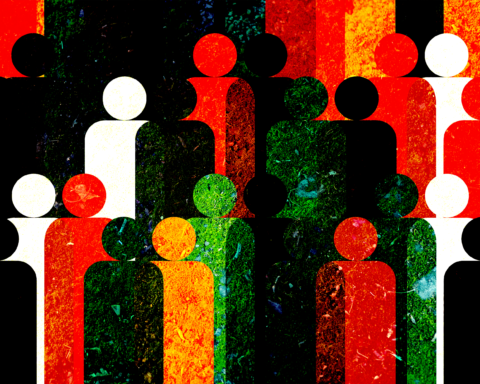
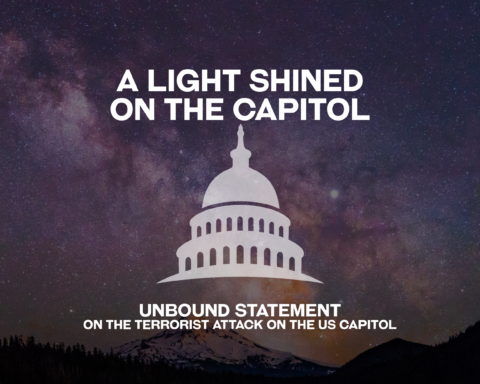
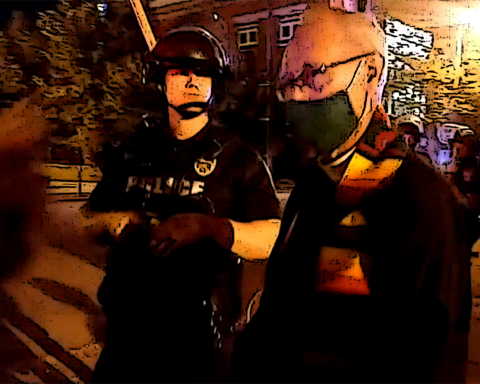
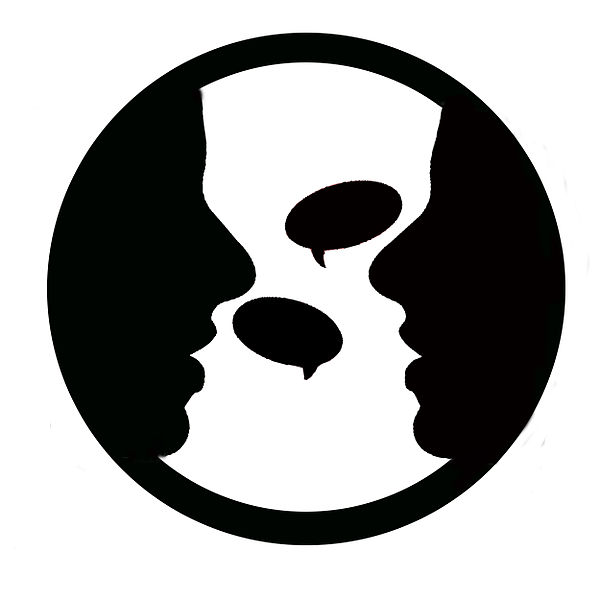
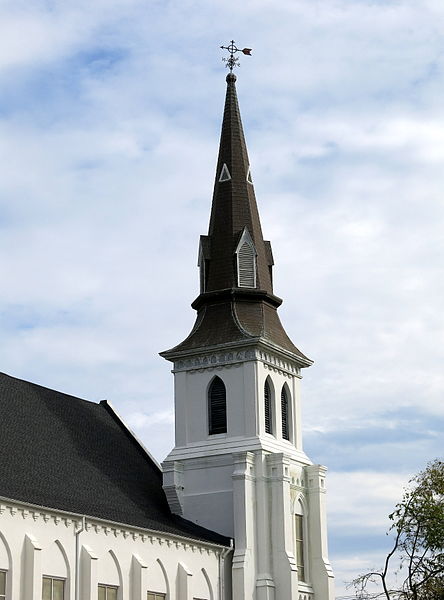
Unbound Social